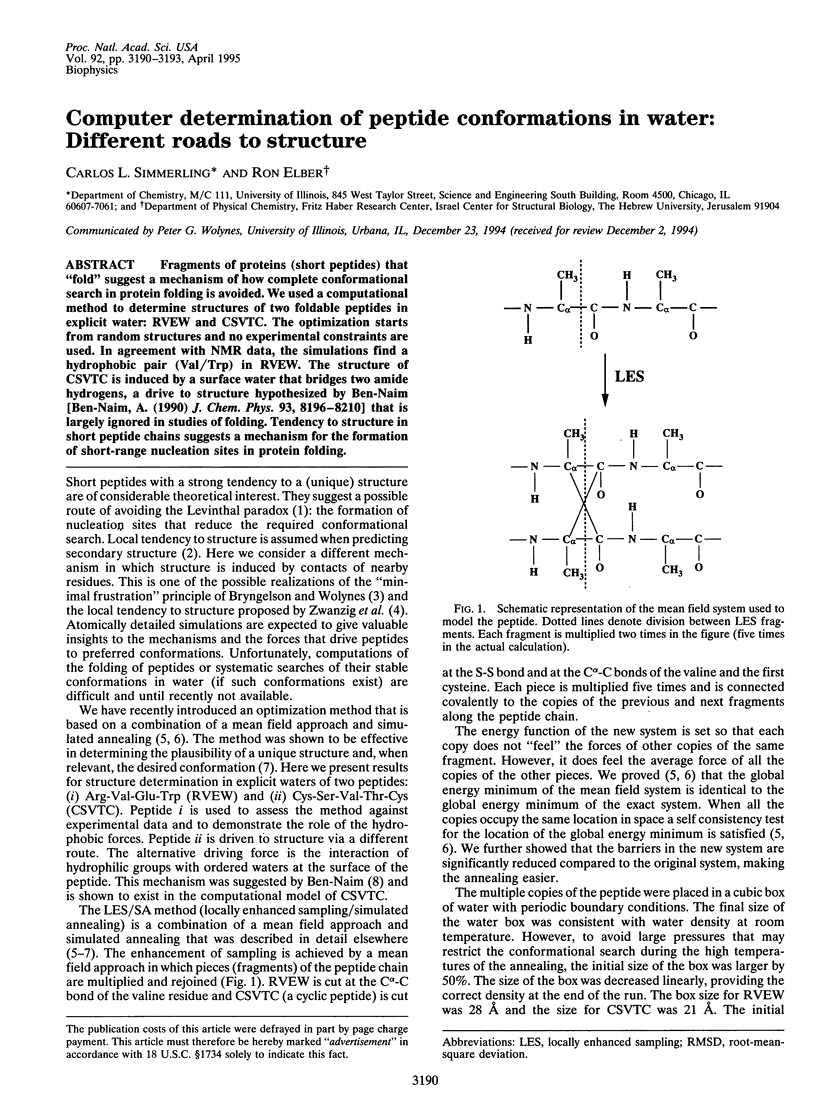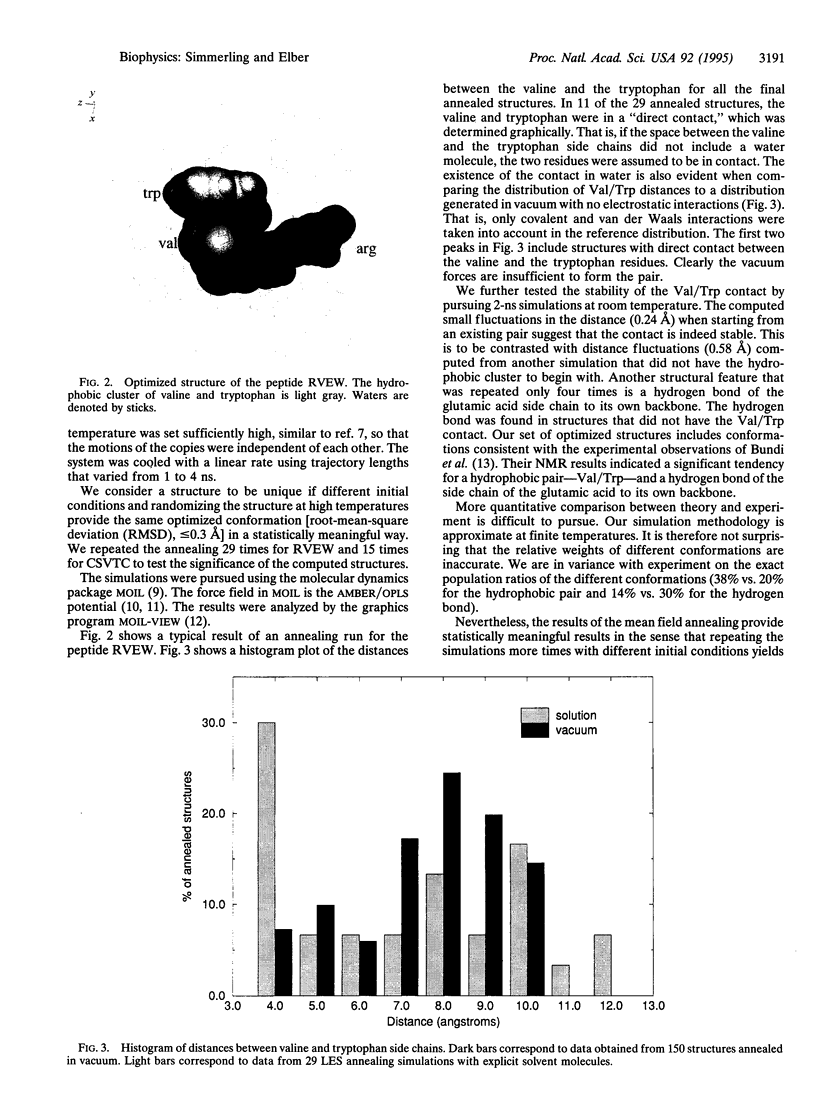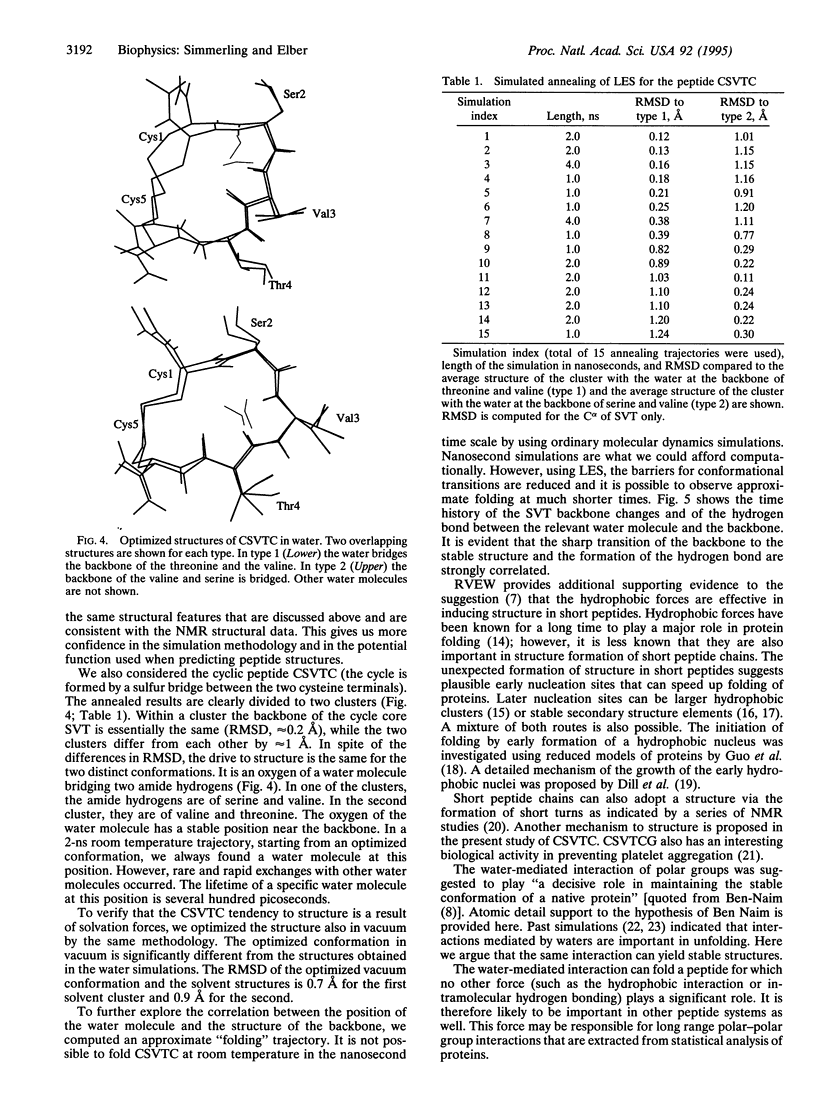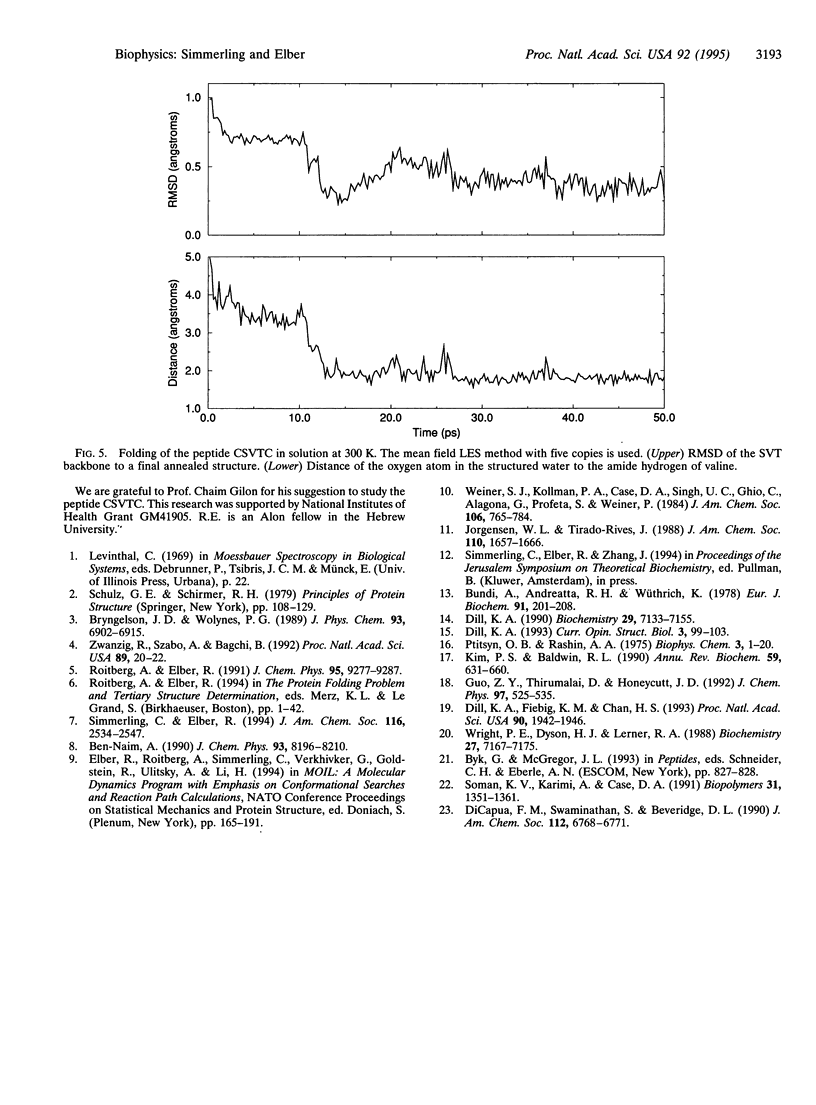Abstract
Fragments of proteins (short peptides) that "fold" suggest a mechanism of how complete conformational search in protein folding is avoided. We used a computational method to determine structures of two foldable peptides in explicit water: RVEW and CSVTC. The optimization starts from random structures and no experimental constraints are used. In agreement with NMR data, the simulations find a hydrophobic pair (Val/Trp) in REVW. The structure of CSVTC is induced by a surface water that bridges two amide hydrogens, a drive to structure hypothesized by Ben-Naim [Ben-Naim, A. (1990) J. Chem. Phys. 93, 8196-8210] that is largely ignored in studies of folding. Tendency to structure in short peptide chains suggests a mechanism for the formation of short-range nucleation sites in protein folding.
Full text
PDF



Images in this article
Selected References
These references are in PubMed. This may not be the complete list of references from this article.
- Bundi A., Andreatta R. H., Wüthrich K. Characterisation of a local structure in the synthetic parathyroid hormone fragment 1--34 by 1H nuclear-magnetic-resonance techniques. Eur J Biochem. 1978 Nov 2;91(1):201–208. doi: 10.1111/j.1432-1033.1978.tb20952.x. [DOI] [PubMed] [Google Scholar]
- Dill K. A. Dominant forces in protein folding. Biochemistry. 1990 Aug 7;29(31):7133–7155. doi: 10.1021/bi00483a001. [DOI] [PubMed] [Google Scholar]
- Dill K. A., Fiebig K. M., Chan H. S. Cooperativity in protein-folding kinetics. Proc Natl Acad Sci U S A. 1993 Mar 1;90(5):1942–1946. doi: 10.1073/pnas.90.5.1942. [DOI] [PMC free article] [PubMed] [Google Scholar]
- Kim P. S., Baldwin R. L. Intermediates in the folding reactions of small proteins. Annu Rev Biochem. 1990;59:631–660. doi: 10.1146/annurev.bi.59.070190.003215. [DOI] [PubMed] [Google Scholar]
- Ptitsyn O. B., Rashin A. A. A model of myoglobin self-organization. Biophys Chem. 1975 Feb;3(1):1–20. doi: 10.1016/0301-4622(75)80033-0. [DOI] [PubMed] [Google Scholar]
- Soman K. V., Karimi A., Case D. A. Unfolding of an alpha-helix in water. Biopolymers. 1991 Oct 15;31(12):1351–1361. doi: 10.1002/bip.360311202. [DOI] [PubMed] [Google Scholar]
- Wright P. E., Dyson H. J., Lerner R. A. Conformation of peptide fragments of proteins in aqueous solution: implications for initiation of protein folding. Biochemistry. 1988 Sep 20;27(19):7167–7175. doi: 10.1021/bi00419a001. [DOI] [PubMed] [Google Scholar]
- Zwanzig R., Szabo A., Bagchi B. Levinthal's paradox. Proc Natl Acad Sci U S A. 1992 Jan 1;89(1):20–22. doi: 10.1073/pnas.89.1.20. [DOI] [PMC free article] [PubMed] [Google Scholar]




